# Synth DIY
Once I heard a story about rats and overweight. They experimented with what would make rats fattier: a high intake of sucker or a high intake of fat. They concluded that it doesn't make actually such difference. However once they gave the rats a combination of the two the rats exploded! Apparently music and diy electronics is my sucker and fat for the mind. I didn't gain weight luckily but it served as the perfect diversion during the 2020-2021 corona pandemic. It still a passion of me today.
I share most of my SynthDIY adventures on my Github. (opens new window)
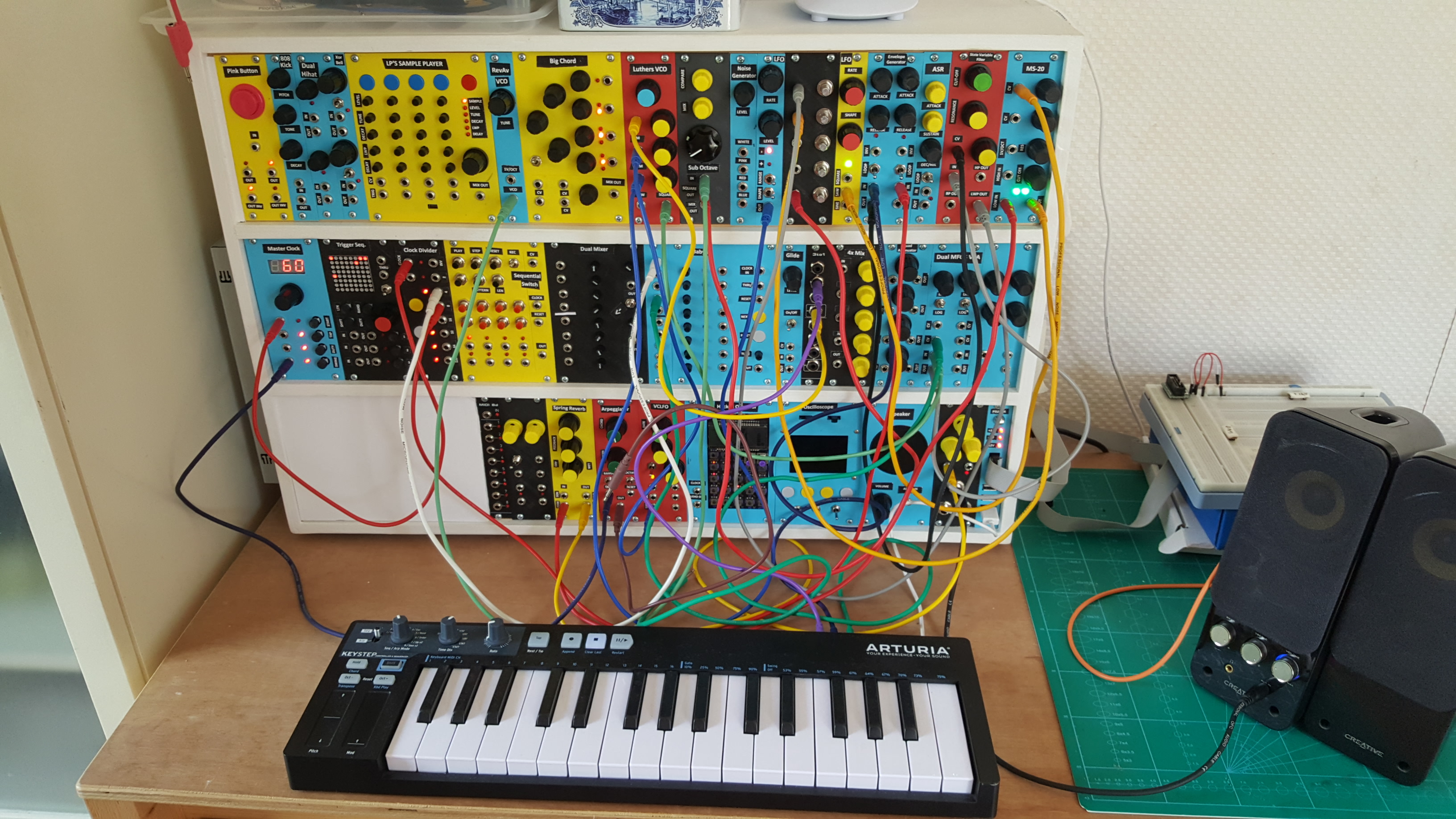
The cool thing about "synth diy" is that by building everything yourself you not only save a little bit of money but you also learn a lot. As I started building modules from existing circuits I quickly realized that most of those circuits share similar concepts. Those concepts can be recombined into new ideas. I was able to adjust existing circuits with new ideas and somewhat later I actually build complete new synthesizer modules from the ground up that I shared with people all over the world.
# Sample Player
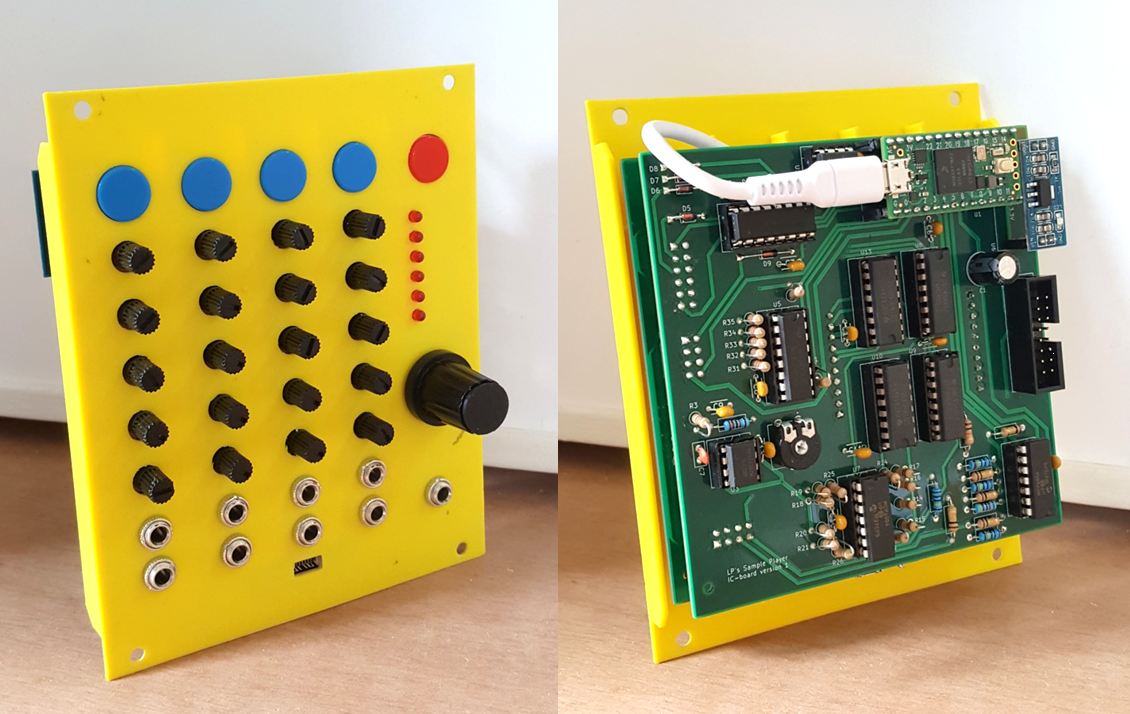
This is a digital module with the brain of a Teensy microcontroller (part of the Arduino environment). It can play four samples at once, and with the knobs you can set different effects for each. Furthermore, the samples can be triggered and controlled externally.
# Probability gate
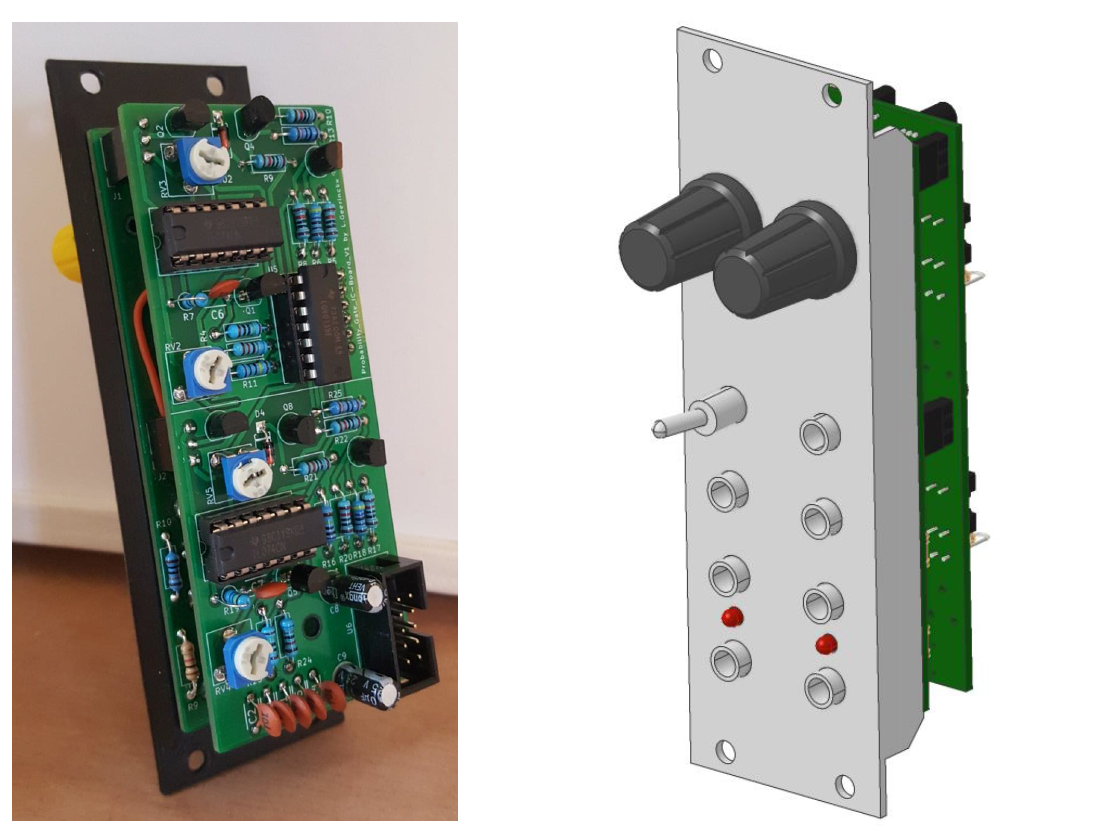
The Probability gate is a purely analogue module. It basically outputs a clock pulse depending on a probability set by the user. With this you can set for the chance for instance that a certain drum sound is played between 0 - 100%. This is ideal for self generating patches. More info see here. (opens new window)
# Trigger Sequencer
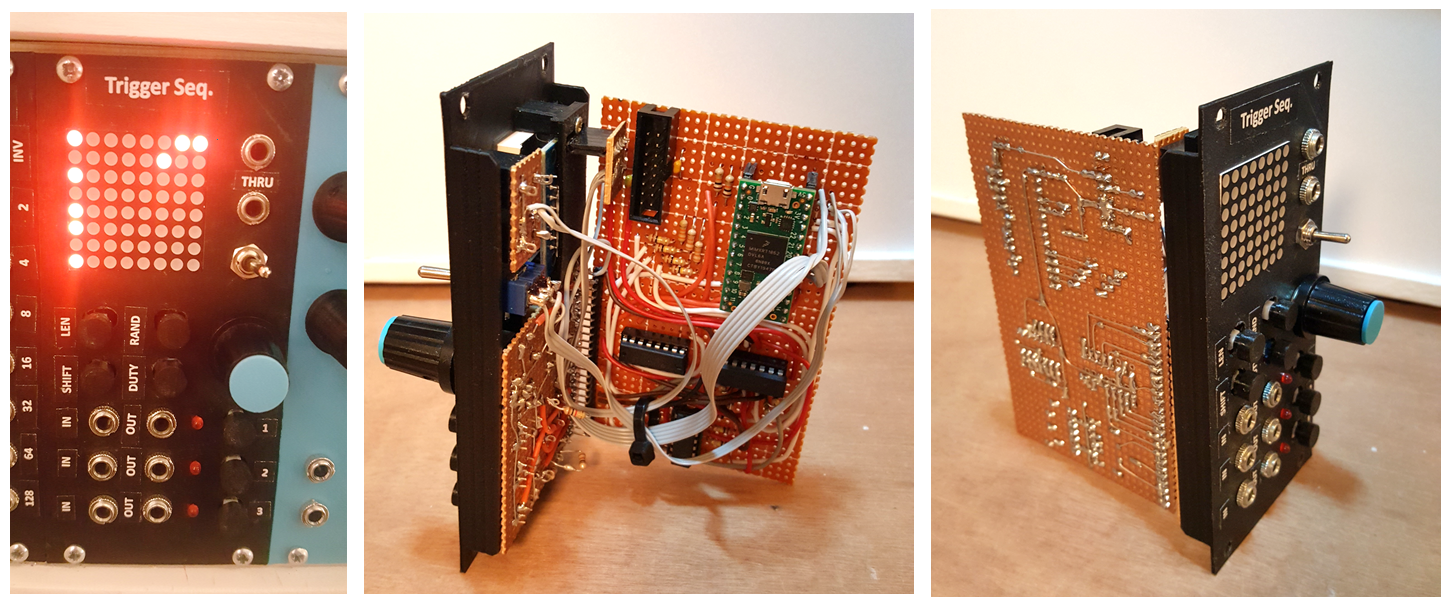
This microcontroller based module can generate rhythms for drum modules and more. With the knobs users can set different paraments so the module can generate new interesting patterns. See here. (opens new window)
# Sequential Switch
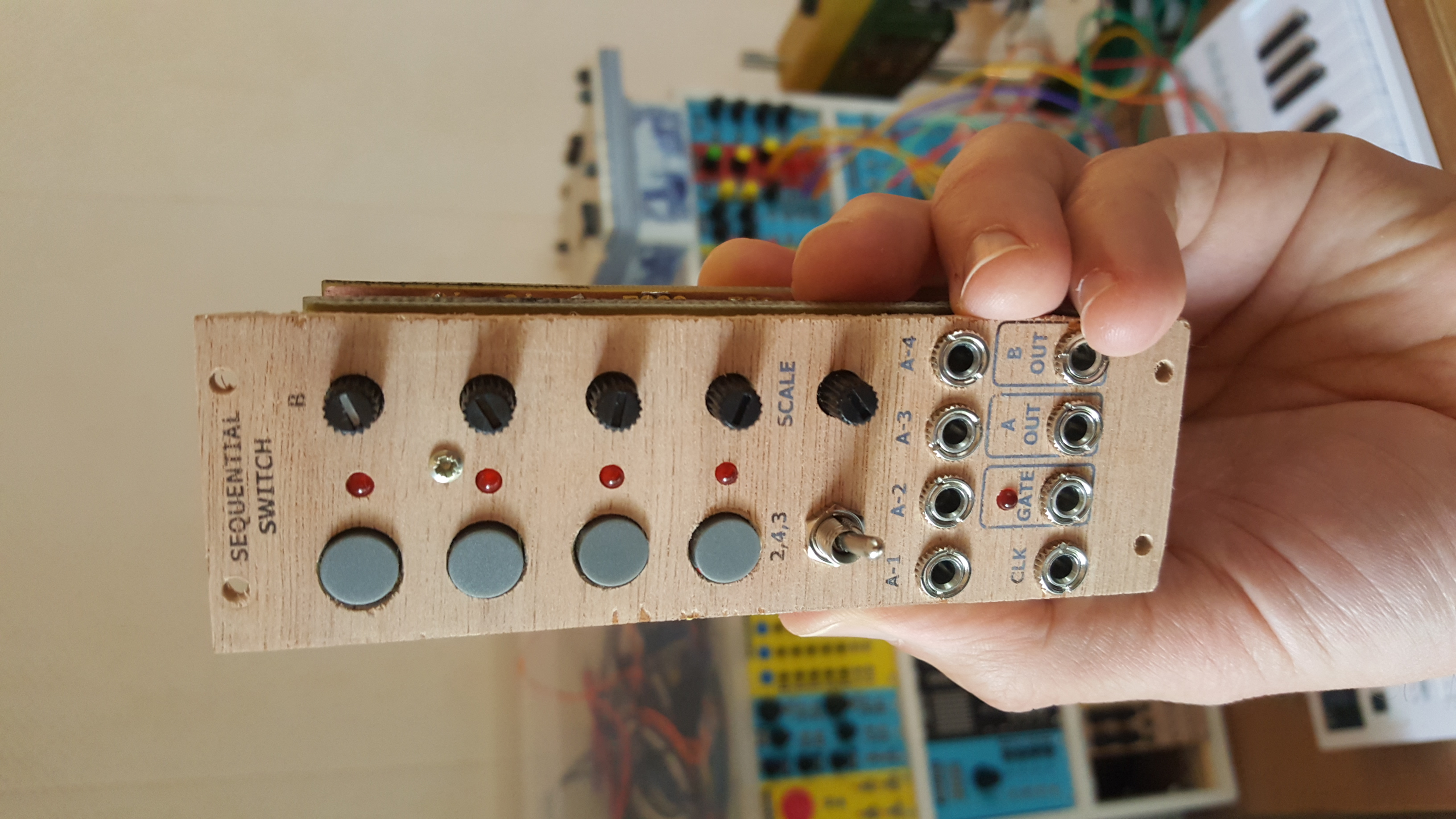
This module is a four step sequential switch and sequencer with manual step control. Examples of how to use it:
- Automatically switch between different CV sources like a fast LFO, a slow LFO, and an envelope generator.
- Build complex sounds by quickly looping between different VCO shapes comming from a CEM3340 VCO.
- Build complex rhythms by switching between different simple gate patterns.
- Switch quickly between different audio sources during a performance with the manual buttons.
- Build longer and more complex sequences by automatically switch between different analog step sequencers.
- Quickly jump between different step lenght of an analog sequencer by switching between four different reset clocks.
- Create four different drum sounds and play them manually with the manual gate output into the clock input of my Low Pass Gate and the CV out into * the pitch control of a VCO that goes into that same LPG again.
- Create random colored hihats by using four different noise sources and switch between with my Probability gate for the clock input.
More info about this module see here. (opens new window).